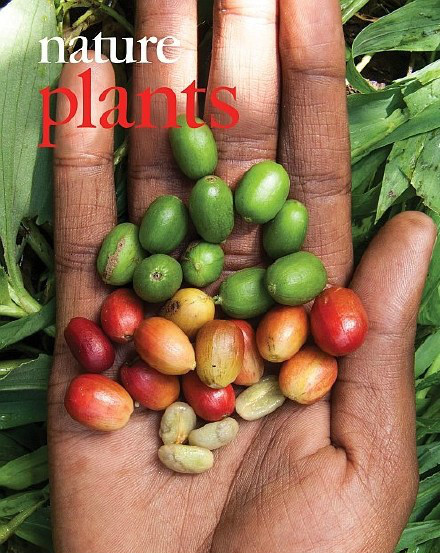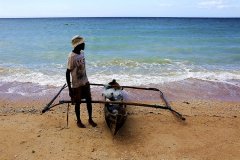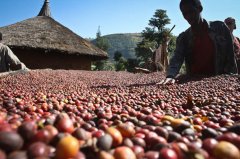Description of flavor of Arabica boutique coffee beans and introduction of planting area
For professional baristas, please follow the coffee workshop (Wechat official account cafe_style)
Elaraby grows in an area with an altitude of 600-2200m, a temperature of 15 °- 24 °C and an annual rainfall of 1200-2200mm. From flowering to fruit ripening for about 7-9 months, its bean shape is long and has a strong and round wet aroma. The coffee made from Arabica coffee has strong complex flavors such as flowers, fruit, chocolate and caramel. The bitter taste and sour taste of the coffee are well balanced. Its caffeine content is less than 1.5%.
Arabica beans are rich in aroma and taste, and taste softer and palatable. Therefore, it occupies a major position in the market. The caffeine content is about 1.5%. Thus it can be seen that the beans selected for good coffee should be Arabica, but only Arabica is too general. Arabica coffee can also be good or bad due to differences in geographical location, growing environment, planting methods and so on. Arabica coffee accounts for 70% and 80% of all coffee production. Its excellent flavor and aroma make it the only coffee that Arabica beans can drink directly. However, its resistance to dryness, frost, diseases and insect pests is too low, especially the natural enemy of coffee-leaf rust, so all producing countries are committed to variety improvement. It turned out that all the commercial coffee in the world was small-grain coffee, but it was only at the end of the 19th century that growers began to look for other disease-resistant varieties because of the collapse of a large number of coffee farms caused by leaf rust. Small-grain coffee is still the most important coffee variety, accounting for about 3% of the world's total coffee production. It is mainly grown in Latin American countries, but also partly in Indonesia and the Pacific islands.
The geographical and climatic conditions of Brazil, the largest coffee producer in the world, are very suitable for the growth of small-grain coffee, and the main coffee varieties planted are also small-grain coffee. Brazil's coffee production accounts for more than 1% of the world's total output. The fruit of small-grain coffee is smaller than that of medium-grain coffee and large-grain coffee. The berries are oval and generally contain two seeds, the so-called "coffee beans". The three early subspecies in the Coffea arabica series are: blue mountain subspecies (varietal Blue coffee flower coffee flower Mountain), Tibica subspecies (varietal Typica) and bourbon species (varietal Bourbon). Jamaican Blue Mountain is an excellent coffee; Tibica, native to Ethiopia and southeastern Sudan, is the most widely cultivated variety of coffee in the Western Hemisphere; and Hawaii's Kona, which has a high yield in Hawaii, is comparable in quality to Blue Mountain coffee, with a price difference of only $1 to $3.

Important Notice :
前街咖啡 FrontStreet Coffee has moved to new addredd:
FrontStreet Coffee Address: 315,Donghua East Road,GuangZhou
Tel:020 38364473
- Prev

You don't know the quality Robusta boutique coffee from Madagascar.
Professional baristas Please follow the Coffee Workshop (Wechat official account cafe_style) Madagascar the coffee industry has been privatized and many regulations have been lifted since 1989, with a total output of about 1 million bags a year. As Malagasy people like to drink coffee, the domestic consumption of coffee is very high. The quality of Robusta coffee in the country is excellent, France
- Next

The skill of judging the roasting degree of coffee beans
Professional barista communication Please pay attention to the concentration of smoke when roasting coffee beans in the coffee workshop (Wechat official account cafe_style). When the coffee beans enter the second explosion, there will be a smoking state, so the roasting degree of coffee beans can also be judged by the smoke concentration. This judgment method is not aimed at all coffee beans, because of the different characteristics of various beans, so it is not necessary in practice.
Related
- Beginners will see the "Coffee pull flower" guide!
- What is the difference between ice blog purified milk and ordinary milk coffee?
- Why is the Philippines the largest producer of crops in Liberia?
- For coffee extraction, should the fine powder be retained?
- How does extracted espresso fill pressed powder? How much strength does it take to press the powder?
- How to make jasmine cold extract coffee? Is the jasmine + latte good?
- Will this little toy really make the coffee taste better? How does Lily Drip affect coffee extraction?
- Will the action of slapping the filter cup also affect coffee extraction?
- What's the difference between powder-to-water ratio and powder-to-liquid ratio?
- What is the Ethiopian local species? What does it have to do with Heirloom native species?

